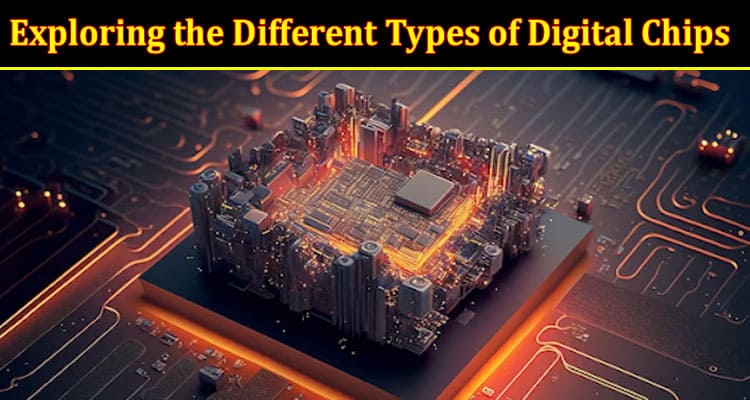Digital chips are ubiquitous in our modern world. From the smartphones in our pockets to the computers on our desks, they are essential components of countless electronic devices. But what exactly are digital chips, and what are the different types?
In this blog post, we will explore the different types of digital chips and their applications. We will also discuss the latest trends in digital chip technology.
Different Types of Digital Chips
Digital chips can be classified into a number of different categories, depending on their function. Some of the most common types of digital chips include:
1. Microprocessors
Microprocessors are the powerhouses of digital chips. They are the central processing units (CPUs) of computers and many other electronic devices. Microprocessors are designed to execute instructions and perform calculations at incredible speeds. They act as the brains of the device, interpreting software instructions and executing them to carry out various tasks.
The two major manufacturers of microprocessors, Intel and AMD, are in fierce competition, continually pushing the boundaries of performance. Different microprocessors cater to different applications, with some optimized for general computing tasks, while others are designed for specific applications like gaming or data center operations.
2. Memory Chips
Memory chips come in various forms, including Random Access Memory (RAM) and Read-Only Memory (ROM). RAM is used for temporary data storage, allowing your device to access and process information quickly. The more RAM a device has, the more data it can work with simultaneously, resulting in faster performance.
ROM, on the other hand, stores essential instructions and data that need to be accessible even when the device is turned off. It contains the firmware and software instructions required to boot up the device and perform basic operations. EEPROM (Electrically Erasable Programmable Read-Only Memory) and Flash memory are types of ROM that allow for data to be modified or updated as needed.
3. Graphics Processing Units (GPUs)
Graphics Processing Units, or GPUs, are specialized digital chips designed to handle graphics and visual processing. They are crucial for rendering high-quality images and videos, making them a vital component in gaming consoles, workstations, and even smartphones. GPUs are optimized for parallel processing, which enables them to handle complex mathematical computations required for rendering 3D graphics and videos with speed and efficiency.
The battle for GPU supremacy is primarily fought between NVIDIA and AMD. Both companies continuously release new GPUs with improved performance and features, making them essential components for gaming and content creation.
4. Field-Programmable Gate Arrays (FPGAs)
FPGAs are digital chips that offer a unique level of flexibility. Unlike microprocessors, which are designed for specific tasks and functions, FPGAs can be programmed to perform a wide range of tasks. This adaptability makes FPGAs ideal for applications where the required functions may change over time or where a highly specialized task needs to be executed.
FPGAs are commonly used in industries like telecommunications, aerospace, and scientific research, where rapid prototyping and customization are essential. They are also employed in niche applications like cryptocurrency mining, where the algorithm being used can change frequently.
5. Application-Specific Integrated Circuits (ASICs)
ASICs are the polar opposite of FPGAs. Instead of being versatile, they are designed for highly specific tasks and functions. This specialization allows ASICs to excel in their designated roles, offering unmatched performance and efficiency.
For example, Bitcoin mining relies heavily on ASICs, which are designed to perform the complex calculations required to mine new coins with remarkable speed and power efficiency. Other applications for ASICs include specialized signal processing, cryptography, and AI acceleration.
6. Digital Signal Processors (DSPs)
Digital Signal Processors, or DSPs, are digital chips optimized for processing and manipulating analog and digital signals. They are commonly used in audio processing, image compression, and telecommunications applications. DSPs excel at performing real-time calculations on streaming data, making them a key component in modern communication systems and audio equipment.
7. System-on-Chip (SoC)
System-on-Chip is a versatile digital chip that integrates multiple components offered by electronic parts supplier onto a single chip. It typically includes a microprocessor, memory, input/output interfaces, and various other components required for a specific application. SoCs are commonly used in mobile devices like smartphones and tablets, as they allow for compact designs and efficient power consumption.
One of the most well-known SoC manufacturers is Qualcomm, which produces chips that power a significant portion of the world’s smartphones. SoCs are also used in a wide range of embedded systems and IoT devices.
8. Application Processors
Application processors are a type of SoC designed for mobile devices and embedded systems. They are responsible for running the operating system and applications on smartphones and tablets. These processors often incorporate multiple cores, including CPU cores for general-purpose computing and GPU cores for graphics processing.
Apple’s A-series chips and Qualcomm’s Snapdragon series are prime examples of application processors that drive many of the world’s smartphones.
End Note
Digital chips are essential components of our modern world. They are used in a wide variety of applications, from computing and communications to consumer electronics and industrial control. The digital chip industry is constantly evolving, with new technologies being developed all the time.
FAQs
1. What are the different types of microchips?
Logic chips, memory chips, ASICs, SoCs, etc are different types of microchips.
2. What are the 3 types of memory chips?
There are 3 types of memory chips, RAM, ROM, and flash memory.
3. What is the definition of a digital chip?
An integrated circuit that processes digital signals.
4. What is the name of the main computer chip?
A CPU, the brain of a computer, executes instructions, performs calculations, and controls input/output.

